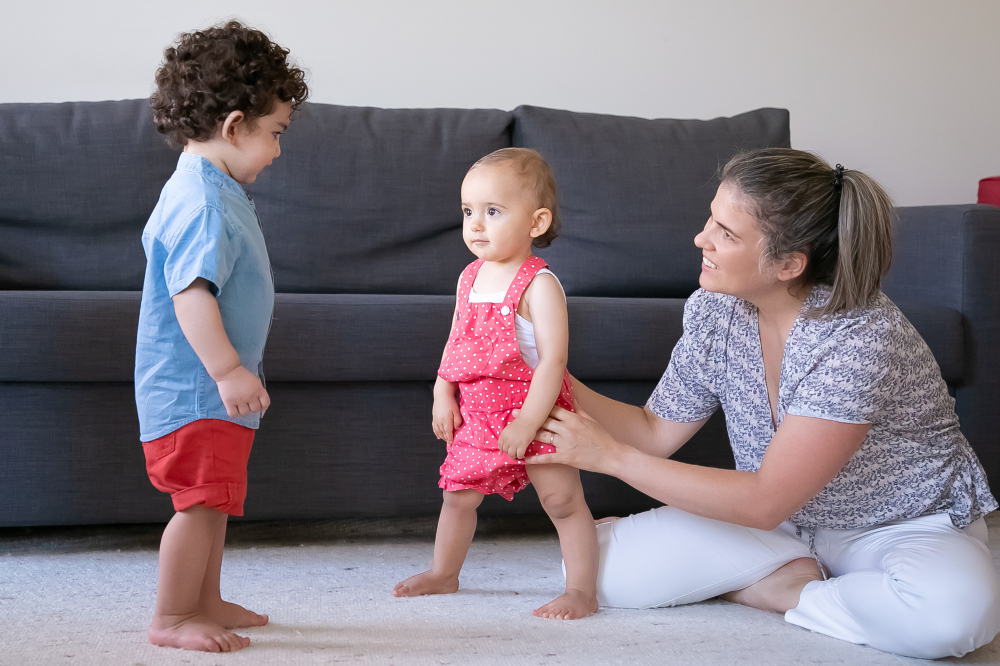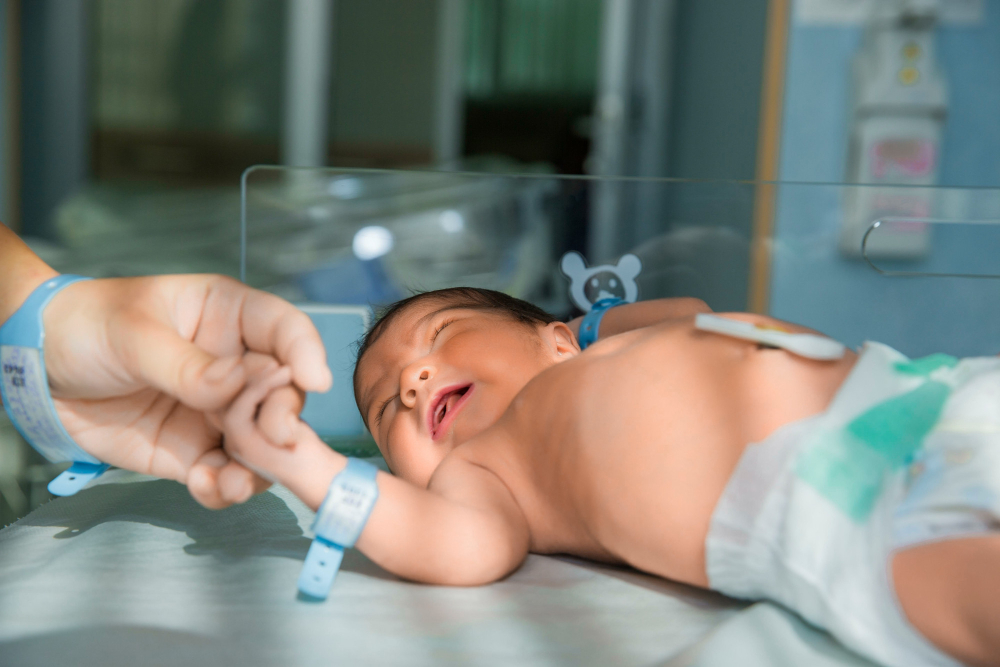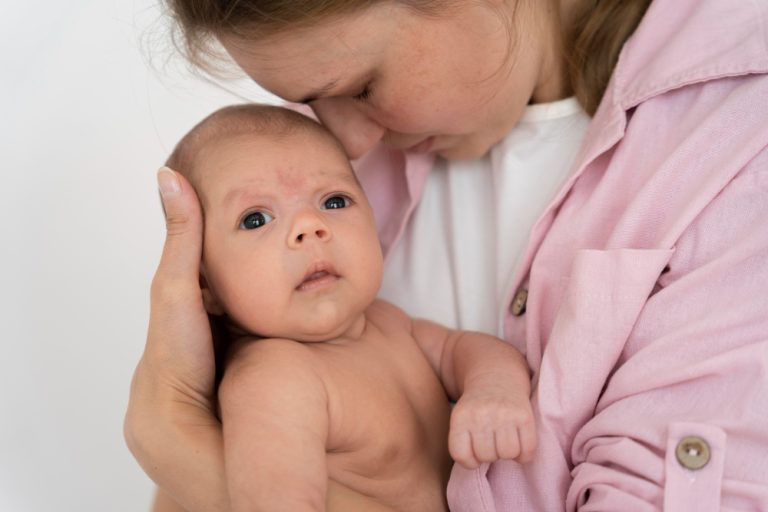How Many Bones Are Babies Born With? Baby Bones Development
Have you ever stopped to think about how many bones are babies born with or why babies seem to have more bones than adults? And what’s even more puzzling is that as they grow, their bones fuse together to form fewer bones. What’s the reason behind this fascinating phenomenon?
How does bone development and growth really work? Join me on a journey of discovery as we delve into the intricate world of bone development, and uncover the secrets behind why babies have more bones.
In our exploration, we’ll dive into the amazing process of bone development and fusion in babies. From the vital role of calcium and nutrition in supporting healthy baby bones to rare bone disorders or conditions related to baby bones, we’ll uncover the remarkable journey of how a tiny newborn’s bones transform over time.
Join us as we uncover the surprising facts and insights about baby bones, enriching your understanding of this essential aspect of early human development. Get ready to be amazed by the wonders of nature as we reveal the secrets behind why and how many bones are babies born with!
Let’s take a closer look at the evolution of baby bones, from their initial formation to the fascinating fusion process that shapes their skeletal structure.
Introduction: How Many Bones Are Babies Born With?

The marvels of human anatomy never cease to amaze, and baby bones are no exception. These tiny, delicate structures play a vital role in supporting a growing child’s body. What makes baby bones particularly fascinating is their unique characteristics and composition.
From the moment a baby is born, their bone structure starts developing and evolving. Although babies appear fragile, their bones possess remarkable adaptability and resilience, paving the way for growth and strength. Understanding the intricacies of baby bones can provide valuable insights into the human body’s early stages of development.
During this transformative period, babies have more bones than adults, a fact that often surprises many. While adults typically have around 206 bones, newborns boast a greater number of individual bones due to the additional cartilaginous structures that have yet to fuse together.
Baby bones are more flexible and continue to develop as the child grows. Over time, certain bones fuse together, resulting in a gradual decrease in the overall number of bones. This fusion process gives rise to a stronger skeletal framework, enabling babies to support their ever-growing bodies.
Stay tuned as we delve deeper into the intriguing world of baby bones, exploring the initial number of bones present in a newborn, the process of bone development and fusion, and the vital role of calcium and nutrition in nurturing healthy baby bones.
Let’s unravel the mystery behind these remarkable structures and gain a newfound appreciation for the complexity of the human body in its earliest stages.
The Initial Number of Bones
Babies are born with more bones than adults, which may come as a surprise. While the exact number can vary slightly, a newborn typically has around 300 bones in their tiny body. This number is significantly higher than the approximately 206 bones found in the adult human body. So, why do babies start off with a greater number of bones?
During the early development stages in the womb, the skeletal structure of a baby goes through a fascinating process. Certain bones, known as ossification centers, start as separate pieces and gradually fuse together over time. This fusion process, called ossification, helps create the sturdy and well-defined bones we typically associate with adults.
The reason behind babies having more bones lies in the fact that some bones are not fully fused at birth. The human skeleton undergoes significant changes and growth during the first few years of life. As a result, certain bones, particularly in the skull and limbs, exist as separate parts that will eventually fuse together as the baby grows.
For instance, the skull of a newborn is composed of several separate bones held together by flexible, cartilaginous material. This allows for easier passage during childbirth and provides flexibility for rapid brain growth during the early stages of development. Over time, these separate bones gradually fuse together, forming a solid structure.
It’s important to note that the number of bones in a baby’s body is not fixed. As the bones fuse, some individual bones will combine into larger bones, thereby reducing the overall bone count. By adulthood, the bones have undergone this fusion process, resulting in the reduced number found in the mature human skeleton.
Understanding the initial number of bones in a newborn provides valuable insights into the complexity of human anatomy. As babies grow, their skeletal structure matures and solidifies, ultimately forming the robust framework that supports us throughout our lives.
The Process of Bone Development and Fusion
During the early stages of life, babies experience a remarkable journey of bone development and fusion. This intricate process ensures the growth and strength of their skeletal system. Let’s delve into the stages of bone development and discover how these tiny bones undergo remarkable transformations.
Stage 1: Cartilage Formation (Weeks 4-8)
In the very early weeks of pregnancy, when the fetus is still developing, the first step towards bone formation begins. Cartilage serves as a precursor to bones. It starts to take shape and lays the foundation for future skeletal structures. This process primarily occurs in the limbs and the key components of the spine.
Stage 2: Ossification (Month 3)
Around the third month of gestation, a process called ossification kicks in. Ossification involves the conversion of cartilage into bone tissue. The fetus starts to develop ossification centers, which eventually become the primary sites of bone formation. The cartilage structure gradually begins to harden, creating a solid framework for the bones to develop further.
Stage 3: Bone Growth and Fusion (Months 4-25)
As the baby continues to grow, the bones lengthen and broaden through a process known as bone growth. This growth occurs at specific regions called growth plates, which are found at the ends of long bones. Growth plates are responsible for the longitudinal expansion of bones and account for the increase in height during childhood and adolescence.
Additionally, the bones begin to fuse together. Certain bones that were separate during infancy, such as those in the skull, fuse together over time to form a single solid structure. This fusion enhances the strength and stability of the skeleton.
By the age of 25, the process of bone development and fusion is largely complete, resulting in the final adult bone structure.
Supporting Healthy Bone Development

While the body undergoes these fascinating transformations, it is crucial to provide the necessary support for healthy bone development. Adequate calcium intake, obtained from sources such as dairy products, leafy greens, and fortified foods, plays a pivotal role in ensuring optimal bone growth. Additionally, vitamin D is essential for calcium absorption, and it can be obtained through sunshine exposure or dietary supplements.
Moreover, regular physical activity, especially weight-bearing exercises, stimulates bone development and strengthens the skeletal system. It is recommended to consult with healthcare professionals for appropriate exercise routines suitable for babies.
Understanding the intricate process of bone development and fusion in babies allows us to appreciate the remarkable journey they undertake upon as they grow. By providing the right nutrition and nurturing environment, we can support the healthy development of their bones and lay the foundation for a strong skeletal system in adulthood.
The Role of Calcium and Nutrition

Calcium and proper nutrition play a vital role in supporting healthy bone growth in babies. During the early stages of life, when bones are rapidly developing and growing, it is crucial to provide the necessary nutrients to support their optimal development.
Importance of Calcium
Calcium is a key mineral that contributes to the formation and strength of bones. It helps in the mineralization process, where calcium and other minerals are deposited onto the bone structure, making them hard and sturdy. Adequate calcium intake is essential for proper bone density and growth in infants.
4 Key Sources of Calcium
1. Breast Milk
Breast milk is the best source of nutrition for babies, including calcium. It contains the ideal balance of nutrients, including calcium, to support healthy bone development. Breastfeeding is recommended for at least the first six months of a baby’s life.
2. Formula Milk
If breastfeeding is not an option, infant formula milk is fortified with the necessary nutrients, including calcium. It is designed to provide the right balance of nutrients required for a baby’s growth and development.
3. Dairy Products
Once a baby starts consuming solid foods, incorporating dairy products such as cheese, yogurt, and milk can help meet their calcium needs. These dairy products are excellent sources of calcium.
4. Leafy Green Vegetables
Vegetables like broccoli, spinach, kale, and collard greens are rich in calcium and provide an additional source of this essential mineral.
Ensuring Sufficient Calcium Intake
To ensure that babies receive enough calcium for their growing bones, it is essential to follow a balanced diet that includes the sources mentioned above. Additionally, pediatricians may recommend calcium supplements if necessary, based on individual needs.
Proper nutrition goes hand in hand with calcium intake to support healthy bone growth. Babies require a well-rounded diet that includes a mix of fruits, vegetables, whole grains, and lean proteins. Offering a variety of nutrient-dense foods ensures that babies receive the necessary vitamins, minerals, and other essential nutrients for optimal bone development.
Remember, consulting a healthcare professional or pediatrician is always advisable to ensure that babies receive the right amount of calcium and nutrition needed for their unique growth and development.
5 Rare Bone Disorders in Babies
Rare bone disorders can impact the skeletal system of babies, causing various challenges and concerns. While most babies have healthy bone development, it’s essential to be aware of these rare conditions that can affect a small percentage of infants. Here is a general overview of some of these disorders:
1. Osteogenesis Imperfecta
Also known as brittle bone disease, this genetic disorder leads to fragile bones that break easily. It is caused by a deficiency in collagen, the protein responsible for bone strength.
2. Achondroplasia
This is a type of dwarfism characterized by abnormally short limbs, typically caused by a mutation in the FGFR3 gene. It affects the development of long bones, resulting in shorter stature.
3. Hypophosphatasia
This rare genetic disorder impairs the mineralization of bones and teeth. It can lead to weakened bones, dental problems, and stunted growth.
4. Fibrous Dysplasia
A condition that causes abnormal growth or replacement of bone tissue with fibrous connective tissue. It can result in bone deformities and fractures, leading to pain and functional limitations.
5. Metabolic Bone Diseases
Certain metabolic disorders can affect bone health in babies, such as rickets, which is caused by vitamin D deficiency, and osteopetrosis, a condition where bones become excessively dense and prone to fractures.
It’s important to note that these rare bone disorders require proper medical diagnosis and specialized care from healthcare professionals. Early detection and intervention can help manage symptoms and provide the best possible quality of life for affected infants.
Remember, while these disorders are uncommon, it’s crucial to raise awareness and support research to enhance understanding and treatment options for rare bone disorders in babies.
Fun Facts About Baby Bones
Babies are full of surprises, and their bones are no exception! Here are some fascinating and lesser-known facts about baby bones that will leave you amazed:
1. More Bones Than Adults
Did you know that babies are born with around 300 bones, while adults only have about 206? It’s true! Some of these bones fuse together as a child grows, resulting in a decreased number of bones by adulthood.
2. Soft Spots
You may have noticed the soft spots on a baby’s head, known as fontanelles. These areas allow for flexibility during birth and accommodate the rapid growth of the skull bones. They eventually close as the baby’s bones develop and solidify.
3. Rapid Bone Growth
Baby bones go through a remarkable transformation during their early years. In fact, a baby’s bones grow at an astounding rate, with some bones doubling in length during their first year of life!
4. Cartilage to Bone
At birth, many of a baby’s bones are made of soft and flexible cartilage. Over time, this cartilage gradually transforms into hard bone through a process called ossification. It is essential for providing sturdy support and structure to the growing body.
5. Bone Development
The first two years of life are crucial for bone development. During this time, the baby’s bones are rapidly strengthening, and their density continues to increase. Proper nutrition, especially calcium and vitamin D, plays a vital role in supporting healthy bone growth.
6. Extra Bones in Feet
Babies often have extra bones in their feet, known as “accessory bones.” These additional bones fuse together as the child grows, contributing to the formation of the arches and overall foot structure.
7. Brittle, Yet Resilient
Despite being more fragile than adult bones, baby bones have an incredible ability to heal quickly. This resilience is due to the higher concentration of stem cells in their bones, promoting rapid repair and regeneration.
Now that you’re armed with these intriguing facts, you have a deeper appreciation for the incredible world of baby bones!
Remember, understanding the fascinating journey of baby bones is crucial for ensuring optimal bone health in infants. Providing a balanced diet rich in calcium, engaging in supervised physical activity, and regular pediatric check-ups are essential for supporting healthy bone development.
How to Support Healthy Baby Bones | 6 Practical Tips

Supporting the healthy development of your baby’s bones is crucial for their overall growth and well-being. Here are some practical tips and advice for parents to promote optimal bone health in babies:
1. Ensure Sufficient Calcium Intake
Calcium is essential for bone strength. If your baby is exclusively breastfed, make sure you’re getting enough calcium in your diet. If you’re using formula milk, choose a brand that provides adequate calcium supplementation. Speak to your pediatrician for specific recommendations.
2. Introduce Solid Foods
As your baby transitions to solid foods, incorporate calcium-rich options such as leafy green vegetables, dairy products, and fortified cereals. These provide the necessary nutrients for bone development.
3. Encourage Physical Activity
Engage your baby in age-appropriate physical activities like supervised tummy time, crawling, and later, walking. Physical activities stimulate bone growth and enhance muscle strength.
4. Provide Vitamin D
Vitamin D is essential for the absorption of calcium. Ensure your baby gets adequate sun exposure or consult with your pediatrician regarding supplemental vitamin D drops, especially if sun exposure is limited.
5. Practice Safe Handling
Always support your baby’s head and neck during handling and lifting to prevent any injury to their delicate bones and spine.
6. Regular Check-ups
Schedule regular visits with your pediatrician to monitor your baby’s growth and development, including bone health. They can provide personalized guidance based on your baby’s specific needs.
Remember, ensuring good nutrition, appropriate physical activity, and regular medical care are key to supporting healthy baby bones. By following these tips, you’ll contribute to your baby’s overall well-being and set the foundation for strong and healthy bones in the future.
The Final Verdict: How Many Bones Are Babies Born With
In conclusion, understanding the development of baby bones is crucial for parents and caregivers. Throughout this article, we have explored how many bones are babies born with, the fascinating world of baby bones, and uncovered some surprising facts.
Babies are born with more bones than adults, with an initial count of around 300. However, as they grow, these bones fuse together, resulting in the 206 bones found in a healthy adult.
Proper nutrition, including an adequate intake of calcium, plays a vital role in supporting healthy bone growth in babies. Breast milk, leafy green vegetables, dairy products, and prenatal supplements are excellent sources of calcium. It’s important for parents to ensure their baby receives enough calcium for optimal bone development.
By understanding the process of bone development and fusion in babies, parents can take steps to support their child’s bone health. Encouraging physical activity and providing a balanced diet rich in essential nutrients will contribute to the formation of strong and healthy bones.
In summary, the journey into the world of baby bones has uncovered remarkable insights. By prioritizing good nutrition, supporting physical activity, and facilitating overall well-being, parents can lay the foundation for healthy bone development in their little ones.







